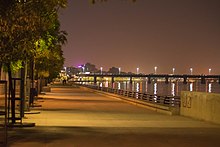
Gandhinagar is the capital of the state of Gujarat in India. Gandhinagar is located approximately 23 km north of Ahmedabad, on the west central point of the industrial corridor between the metropolitan cities of Delhi and Mumbai.

Ahmedabad is the most populous city in the Indian state of Gujarat. It is the administrative headquarters of the Ahmedabad district and the seat of the Gujarat High Court. Ahmedabad's population of 5,570,585 makes it the fifth-most populous city in India, and the encompassing urban agglomeration population estimated at 6,357,693 is the seventh-most populous in India. Ahmedabad is located near the banks of the Sabarmati River, 25 km (16 mi) from the capital of Gujarat, Gandhinagar, also known as its twin city.
This page provides a historical timeline of Ahmedabad, the sixth largest city in India.

The Sabarmati river is one of the major west-flowing rivers in India. It originates in the Aravalli Range of the Udaipur District of Rajasthan and meets the Gulf of Khambhat of Arabian Sea after travelling 371 km (231 mi) in a south-westerly direction across Rajasthan and Gujarat. 48 km (30 mi) of the river length is in Rajasthan, while 323 km (201 mi) is in Gujarat.
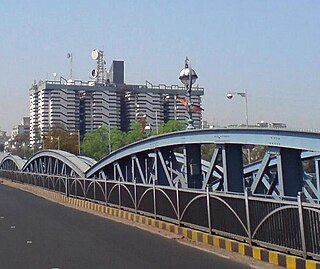
The Ellis Bridge is a century-old bridge in Ahmedabad, Gujarat. It bridges the western and eastern parts of the city across the Sabarmati river. This bowstring arch truss bridge was the first bridge in Ahmedabad, constructed in 1892. Concrete wings were added on either side in 1997 and it was renamed the Swami Vivekananda Bridge.

Ahmedabad Metro is a rapid transit system for the cities of Ahmedabad and Gandhinagar in Gujarat state of India.
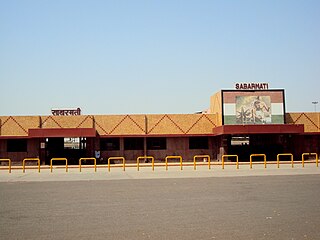
Sabarmati Junction railway station is a junction station of the Indian Western Railway in Ahmedabad, Gujarat. The station is six kilometres (3.7 mi) from the main Ahmedabad Junction railway station on the Ahmedabad–Delhi main line, at Dharamnagar near the Sabarmati Ashram. Sabarmati Junction has 2 tracks, the Mehsana line, and the Botad line, in addition to the main broad-gauge line for trains departing from Ahmedabad. The station has a dedicated rail yard for passenger trains, and was proposed in 2010 for development as an additional terminal for Delhi-bound trains.
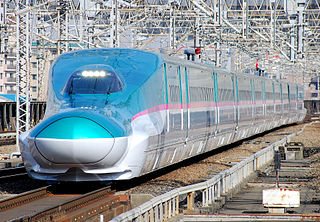
Mumbai–Ahmedabad High Speed Rail Corridor (MAHSR) or Mumbai–Ahmedabad HSR is an under-construction high-speed rail line, which will connect India's economic and financial hub and Maharashtra’s capital, Mumbai, with the largest city of the state of Gujarat, Ahmedabad. When completed, it will be India's first high-speed rail line.
The Surat Metro is an under-construction rapid transit rail system for Surat in the Surat Metropolitan Region, Gujarat state of India. Two corridors with a combined length of 40.35 kilometers are under construction since 18 January 2021. The project is expected to be completed by December 2027 at an estimated cost of ₹12,020.32 crore (US$1.5 billion).
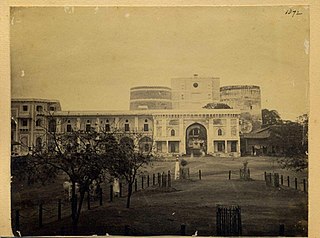
Bhadra Fort is situated in the walled city area of Ahmedabad, India. It was built by Ahmad Shah I in 1411. With its well carved royal palaces, mosques, gates and open spaces, it was renovated in 2014 by the Amdavad Municipal Corporation (AMC) and the Archaeological Survey of India (ASI) as a cultural centre for the city.

Bimal Hasmukh Patel is an architect from Ahmedabad, India, with over 35 years of professional, research and teaching experience in architecture, urban design and urban planning. He is President of CEPT University in Ahmedabad and leads HCP Design Planning and Management Private Limited, an architecture, planning and project management firm. He also founded Environmental Planning Collaborative, a not-for-profit, planning research and advocacy organization.

Sudama Setu is a pedestrian suspension bridge in Dwarka, Gujarat, India. It is named for Sudama, a childhood friend of Krishna. Proposed in 2005, the bridge was opened in 2016.

Deep Depression ARB 02 was a weak tropical cyclone which brought heavy rains and flooding to the Indian state of Gujarat in June 2015. It was the third tropical cyclone and second deep depression of the 2015 North Indian Ocean cyclone season.
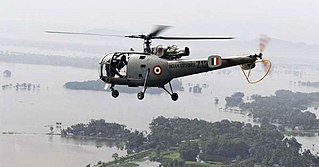
Following heavy rain in July 2017, the Indian state of Gujarat was affected by severe flooding. The floods were reported to have caused total 224 deaths between 1 June and 31 July 2017. 16 people had died in neighbouring Rajasthan state by 31 July.
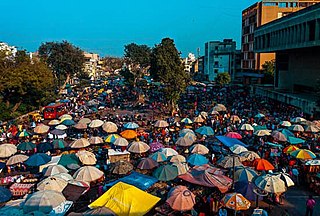
Ravivari market or Gujari Bazar is a market at the Sabarmati riverfront in Ahmedabad, India. It occurs every Sunday. Used items and antique pieces are sold there.

Meshwo or Meshwa is a river flowing in north and central parts Gujarat, state of India. Meshwo is the tributary river of the Sabarmati and subtribunary of the Vatrak River. It rises in the Panchara hills of Aravalli range, in the Dungarpur district of Rajasthan and enters in Gujarat at Shamlaji.
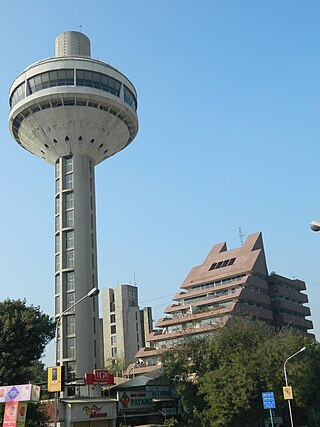
Patang Hotel, officially Neelkanth Patang – The Revolving Restaurant, is a revolving restaurant located at Nehru Bridge corner on Ashram Road in Ahmedabad, Gujarat, India. Built in 1980–1984, 221 feet (67 m) above the ground, it is considered as the landmark of Ahmedabad.
Sardar Vallabhbhai Patel Sports Enclave is an under-construction sports enclave being built in Ahmedabad, Gujarat, India. Once the sports enclave is fully built, it will be one of the largest of its kind in India. The project is being jointly executed with the Ahmedabad Urban Development Authority, and the Government of Gujarat. A primary reason for the sports enclave to be built, is so that the Summer Olympic Games, and other major sporting events could be hosted in India in the future.
The Bhadbhut barrage or Bhadbhut dam is an under construction barrage on Narmada river near Bhadbhut village in Bharuch district, Gujarat, India. The construction started on 7 August 2020 and will be completed by 2025.

Atal Pedestrian Bridge is a pedestrian triangular truss bridge at Sabarmati Riverfront on Sabarmati river in Ahmedabad, Gujarat, India. It has a design inspired by kites. Inaugurated in 2022, it is 300 metres (980 ft) long and 10 metres (33 ft) to 14 metres (46 ft) wide.
